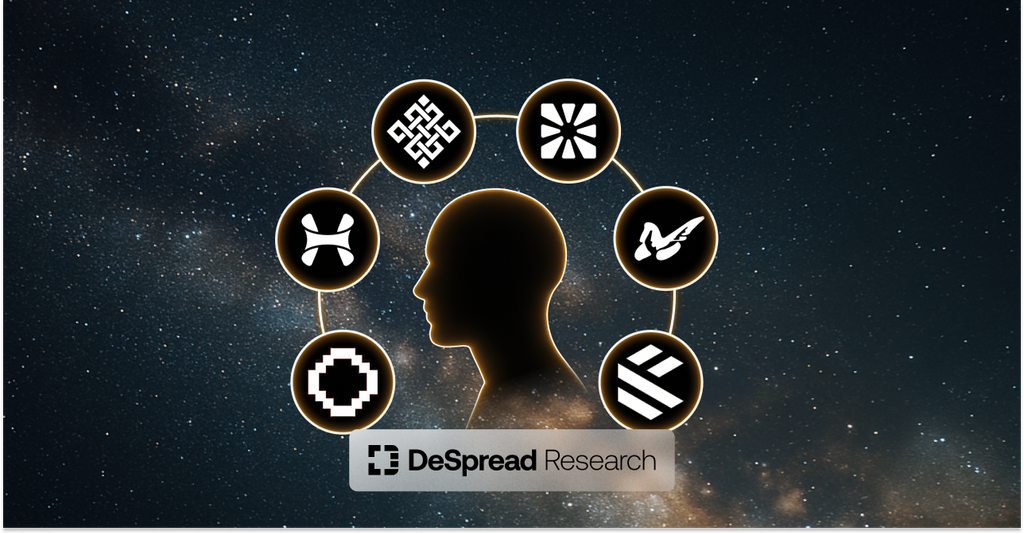
Blockchain X AI, 6 Must-Know Infra Projects
Examining the project's background, key products, fundraising, team background, and the strategy ahead of the TGE


0. Introduction
As advancements in AI technology accelerate, artificial intelligence is becoming increasingly embedded in both everyday life and across industries. This surge in integration has led to an exponential increase in demand for AI, particularly for GPUs, which are essential for handling large-scale computations. A recent example vividly illustrates this issue: shortly after the image generation feature of ChatGPT went viral on social media, the overwhelming GPU demand forced free-tier users to be limited to just three image generations per day.
it's super fun seeing people love images in chatgpt.
— Sam Altman (@sama) March 27, 2025
but our GPUs are melting.
we are going to temporarily introduce some rate limits while we work on making it more efficient. hopefully won't be long!
chatgpt free tier will get 3 generations per day soon.
However, the current GPU market is dominated by a handful of big tech companies, creating structural issues of high costs and restricted accessibility. As AI continues to evolve, the demand for GPUs is expected to grow even further—but under the current centralized market structure, this is likely to become a significant barrier to innovation and scalability.
In response, decentralized infrastructure protocols that combine blockchain and AI have begun to gain attention. These protocols aim to resolve inefficiencies in traditional centralized infrastructures by pooling idle GPU resources distributed across the globe. Their core focus lies in enhancing the scalability and efficiency of the AI ecosystem.
This article explores six standout projects that are gaining significant attention in the current market thanks to major investments, strong team backgrounds, and unique product offerings. We will examine the context behind their emergence, their core services, investment history, team profiles, and strategies in preparation for their upcoming Token Generation Events (TGEs).
1. Gensyn
Gensyn is a Layer 1 blockchain designed to provide large-scale computing resources for machine learning training through a decentralized approach. While the market for AI training compute is projected to grow rapidly—potentially accounting for 1% of global GDP in the coming years—it is currently monopolized by a few major cloud providers such as AWS and Azure, creating clear limitations in terms of cost and accessibility.
To address these structural challenges, Gensyn envisions “the network for machine intelligence.” It proposes a system where anyone can contribute idle GPU resources to the network and receive trustless rewards via smart contracts.
1.1. Key Products and Achievements
High Scalability and Cost Efficiency
Gensyn operates on a Parity Substrate-based PoS (Proof-of-Stake) chain, providing strong scalability and cost advantages over traditional solutions. At the heart of Gensyn’s technology is a computation verification mechanism, which allows complex ML computations performed across multiple devices to be verified without relying on trust in a specific party. This system ensures integrity without redundant re-computation of the same tasks.
Utilization of Idle GPUs and Cost Innovation
By aggregating idle GPU resources from across the globe into a massive virtual cluster, Gensyn claims to reduce compute costs by up to 80% compared to conventional cloud infrastructure such as AWS. Furthermore, users are only charged for the actual computation performed—enabling a more rational and efficient use of GPU resources.
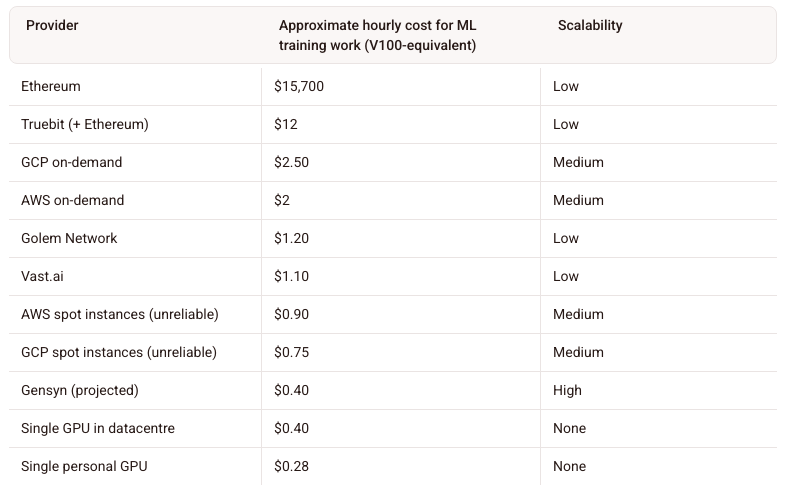
Continual R&D and Strategic Partnerships
Gensyn is not only advancing internal technologies for distributed compute optimization but also collaborating with external partners to improve overall infrastructure for AI training. Major research outputs shared via their official blog include:
- RL Swarm: A framework for distributed reinforcement learning
- Verde: A trustless machine learning verification system at the node level
- SkipPipe: An algorithm for optimizing communication in decentralized environments
- Diverse Expert Ensembles: A framework for composing heterogeneous expert models in parallel
Gensyn focuses on the "compute"—one of the three essential components for AI training (compute, data, labeling)—while complementing the others through research and partnerships. This ecosystem-centric strategy positions Gensyn as a foundational infrastructure layer for decentralized AI.
1.2. Fundraising

To date, Gensyn has raised approximately $50.6 million across three funding rounds. Most notably, the project secured a $43 million Series A round led by a16z, which firmly established Gensyn as one of the most prominent players in the Web3 decentralized compute space.
1.3. Team Background
Harry Grieve, Co-founder & CTO
- MPA in Econometrics and Quantitative Economics, Brown University
- Former Director of Data Research at ML and analytics startup Cytora
- Twitter / LinkedIn
Ben Fielding, Co-founder & CEO
- PhD in Computer Science, Northumbria University
- Founded data privacy startup Fair Custodian
- Co-founded Gensyn with Grieve through Entrepreneurs First
- Twitter / LinkedIn
1.4. TGE Preparation Strategy
Gensyn has outlined its TGE (Token Generation Event) plans in the official litepaper, with rewards planned for early testnet participants and core community contributors.

On March 18th, Emily Donald, Gensyn’s Head of Recruiting, posted a job opening on Twitter for a Head of Finance to handle token operations—fueling anticipation that Gensyn’s TGE is fast approaching.
Currently, the most accessible ways for the public to engage with Gensyn are by participating in the RL Swarm distributed reinforcement learning framework and running repops-demo, both available on Gensyn’s GitHub. In particular, a testnet launched on April 1st allows users to interact with RL Swarm and log their usage data.
2. Ritual
Today’s AI services face several critical limitations, including a lack of computational integrity (the ability to verify model execution), privacy protection, and censorship resistance. Moreover, most applications rely heavily on closed APIs operated by a small group of big tech providers, making AI development and usage neither transparent nor sustainable.
Ritual is a project built around this core problem statement. Its mission is to create a decentralized, open AI infrastructure centered on blockchain—one that enables anyone to freely build, share, and scale AI models without permission. By decentralizing both ownership and execution, Ritual aims to restore accessibility and autonomy across the AI ecosystem.
2.1. Key Products and Achievements
Ritual’s architecture consists of two main components:
- Ritual Chain – a Layer 1 blockchain optimized for AI workloads
- Infernet – a decentralized oracle network for AI inference
Ritual Chain: AI-Optimized L1 Execution Layer

Built with a custom EVM-compatible virtual machine, Ritual Chain is optimized for AI-specific operations like model inference and fine-tuning. It is designed as a modular execution layer, meaning it can interoperate with other Layer 1s and rollups—allowing developers to plug Ritual into a wide range of ecosystems for computational tasks.
Infernet: Decentralized AI Oracle Network
Launched in November 2023, Infernet is the first decentralized oracle network tailored for AI inference. It now consists of over 8,000 independent nodes, each capable of handling requests based on its hardware capabilities.
The defining features of Infernet are decentralization and transparency. Unlike centralized API-based inference, Infernet operates in a trustless manner, preserving privacy and verifiability of results. It also supports:
- Streaming responses
- On-chain payments
- On-chain verification
These features collectively create a robust and user-friendly AI inference environment.
2.2. Fundraising
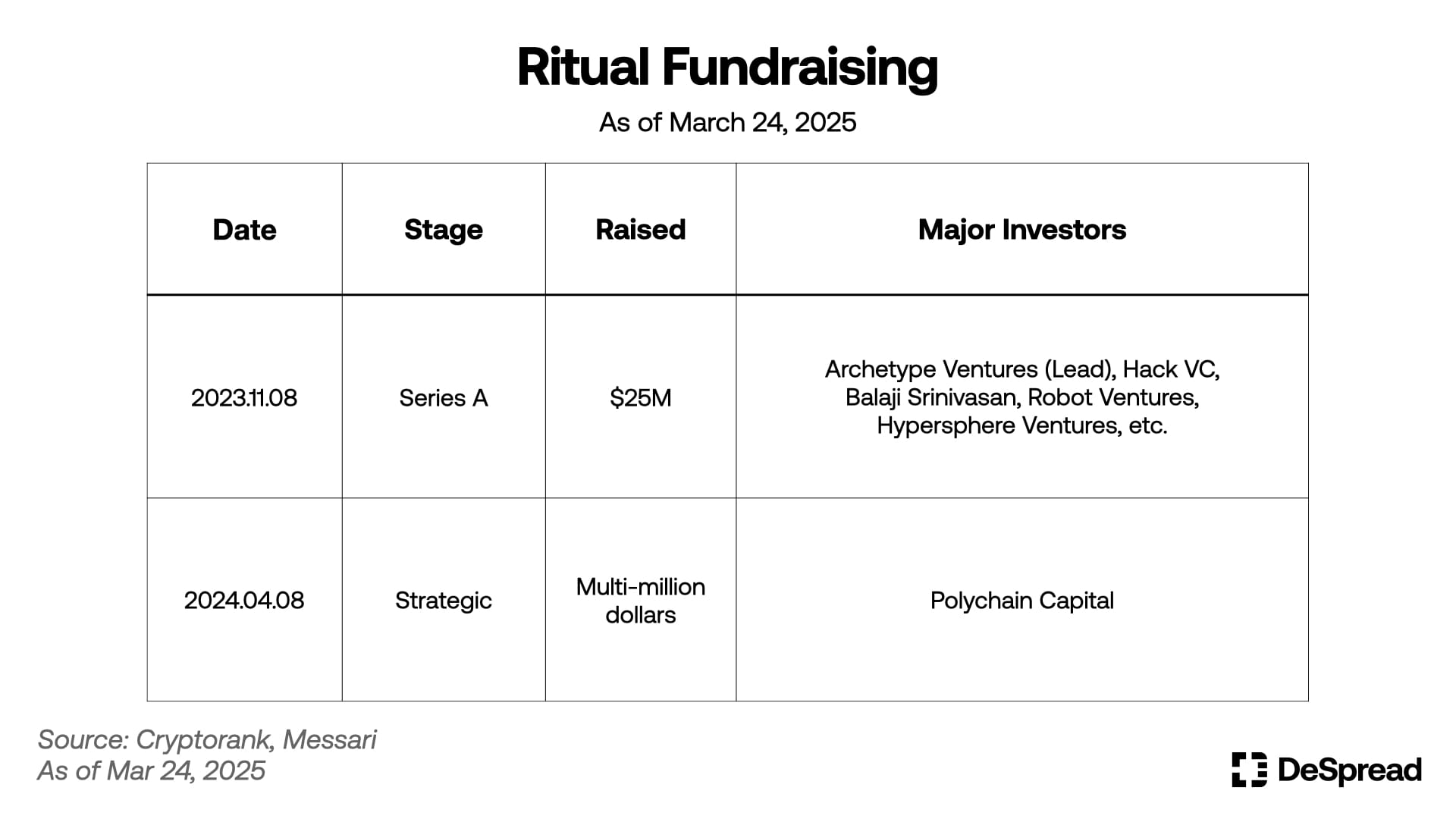
Ritual has achieved notable results through two funding rounds. On November 8, 2023, it raised $25 million in a Series A round led by Archetype Ventures, with participation from Hack VC, which has recently garnered attention for its strong investment performance.
Later, on April 8, 2024, it secured additional investment from Polychain Capital. Although the exact amount was not disclosed, it is estimated to be in the multi-million-dollar range.
2.3. Team Background
Niraj Pant, Co-founder
Akilesh Potti, Co-founder
- Polychain Capital ex-Partner
- Researched ML at MIT, Cornell, Palantir Technologies, etc.
- Twitter / LinkedIn
In addition to the two co-founders, Ritual is advised by several prominent figures in the crypto industry, including Illia Polosukhin, Arthur Hayes, and Sreeram Kannan.
2.4. TGE Preparation Strategy
Ritual Chain is currently in a closed testnet phase, and general users can participate in the Ritual ecosystem by operating Infernet nodes.
However, the Ritual team has stated that there will be no rewards for operating these nodes, meaning this activity may not necessarily lead to token incentives.
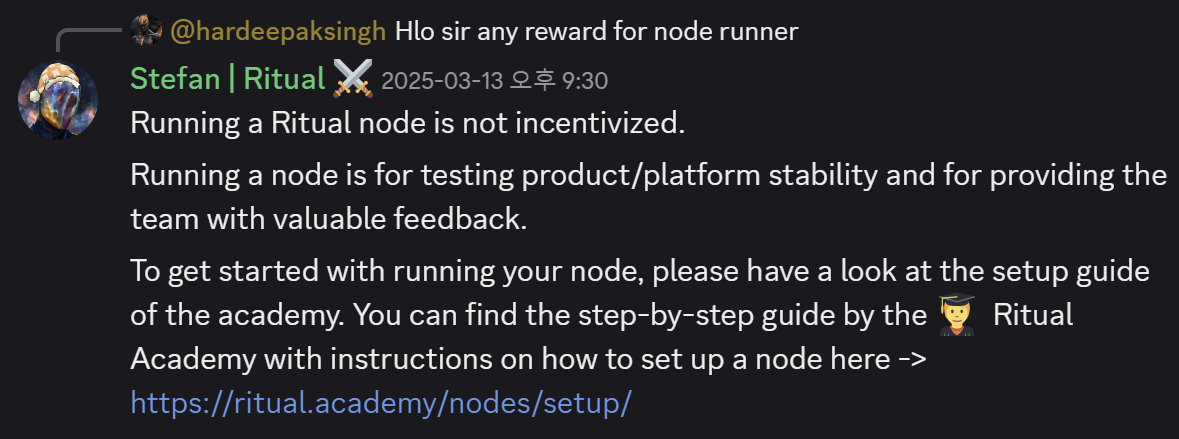
3. Hyperbolic
Hyperbolic is a project designed to tackle the high costs and low reliability of centralized cloud AI services. It aims to build an “Open Access AI Cloud” by aggregating idle GPUs from around the world, allowing anyone to freely access and utilize computing power.
3.1. Key Products and Achievements
Decentralized GPU Marketplace and AI Inference
One of Hyperbolic’s core products is a decentralized GPU marketplace that connects globally distributed idle GPU resources with AI developers in need of computing power. This enables developers to access GPU resources at a significantly lower cost.
Through Hyperbolic’s marketplace, users can save up to 75% compared to traditional cloud services and gain access to GPUs within minutes. After successfully completing its alpha phase, the GPU marketplace entered beta testing. As of January 2025, over 1,000 users have rented more than 10,000 GPUs and executed over 33,000 hours of compute tasks — demonstrating strong early traction.
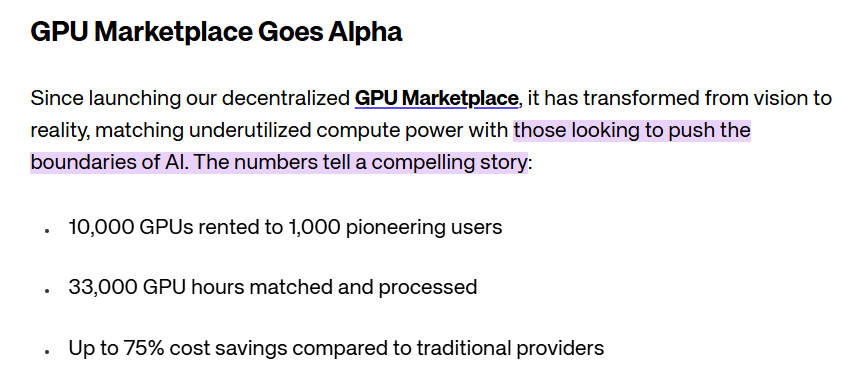
Another core product of Hyperbolic is its AI inference service powered by its proprietary PoSP (Proof-of-Sampling) verification mechanism. Instead of verifying every transaction, PoSP randomly samples a subset to validate the overall reliability of inference results, significantly reducing computational costs. Currently, Hyperbolic supports a developer community of around 40,000 members and handles over 1 billion tokens of AI inference per day at scale.
Partnerships Across Web2 and Web3
Since its inception, Hyperbolic has built a robust network of partnerships spanning both Web2 and Web3 to validate its technical capabilities. Notably, it provides inference services in collaboration with Hugging Face, a leading Web2 company in AI and machine learning. In addition, Hyperbolic has integrated its affordable AI inference APIs into services like Quora’s Poe, OpenRouter, and MyShell, allowing users of these platforms to access Hyperbolic’s offerings directly.
Hyperbolic is also actively engaged in academic and research collaborations. Researchers from top-tier universities such as Stanford, Cornell, UC Berkeley, and NYU are using Hyperbolic’s decentralized GPU network to study large-scale AI models. The team has also co-developed the PoSP protocol with researchers from UC Berkeley and Columbia University to create a more efficient verification mechanism.
3.2. Fundraising

To date, Hyperbolic has raised approximately $20M across three funding rounds. Its $7M seed round on July 30, 2024, was led by Polychain Capital and joined by notable angel investors such as Balaji and Santiago. Later, on December 10, 2024, Hyperbolic raised $12M in a Series A round also led by Polychain, with participation from prominent VCs including Variant, GSR, and Wintermute.
3.3. Team Background
Jasper Zhang, Co-founder
- PhD in Mathematics from Peking University and UC Berkeley
- Former researcher at Citadel and Ava Labs
- Gold medalist in International Mathematical Olympiad
- Twitter / LinkedIn
Yuchen Jin, Co-founder & CTO
- PhD in Computer Science from University of Washington
- Former tech lead at OctoAI, an AI software startup acquired by NVIDIA
- Twitter / LinkedIn
Raluca Ada Popa, Advisor
- PhD in Computer Science from MIT
- Professor of Computer Security at UC Berkeley
- Senior Research Fellow at Google DeepMind
- Twitter / LinkedIn
3.4. TGE Preparation Strategy
Currently, Hyperbolic offers three types of contribution activities on its website: “Models,” “Rent GPU,” and “Supply GPU.” Among them, Supply GPU is under a waitlist, making it less accessible to general users. Therefore, attention should be focused on the “Models” and “Rent GPU” sections.
The “Models” tab allows users to interact with various LLMs (Large Language Models) provided by Hyperbolic, including DeepSeek-R1 and Llama-3.3. There are five types of models available — text, image, VLM (Vision Language Model), base, and audio — and users can engage with these models by loading credits and submitting prompts or questions.
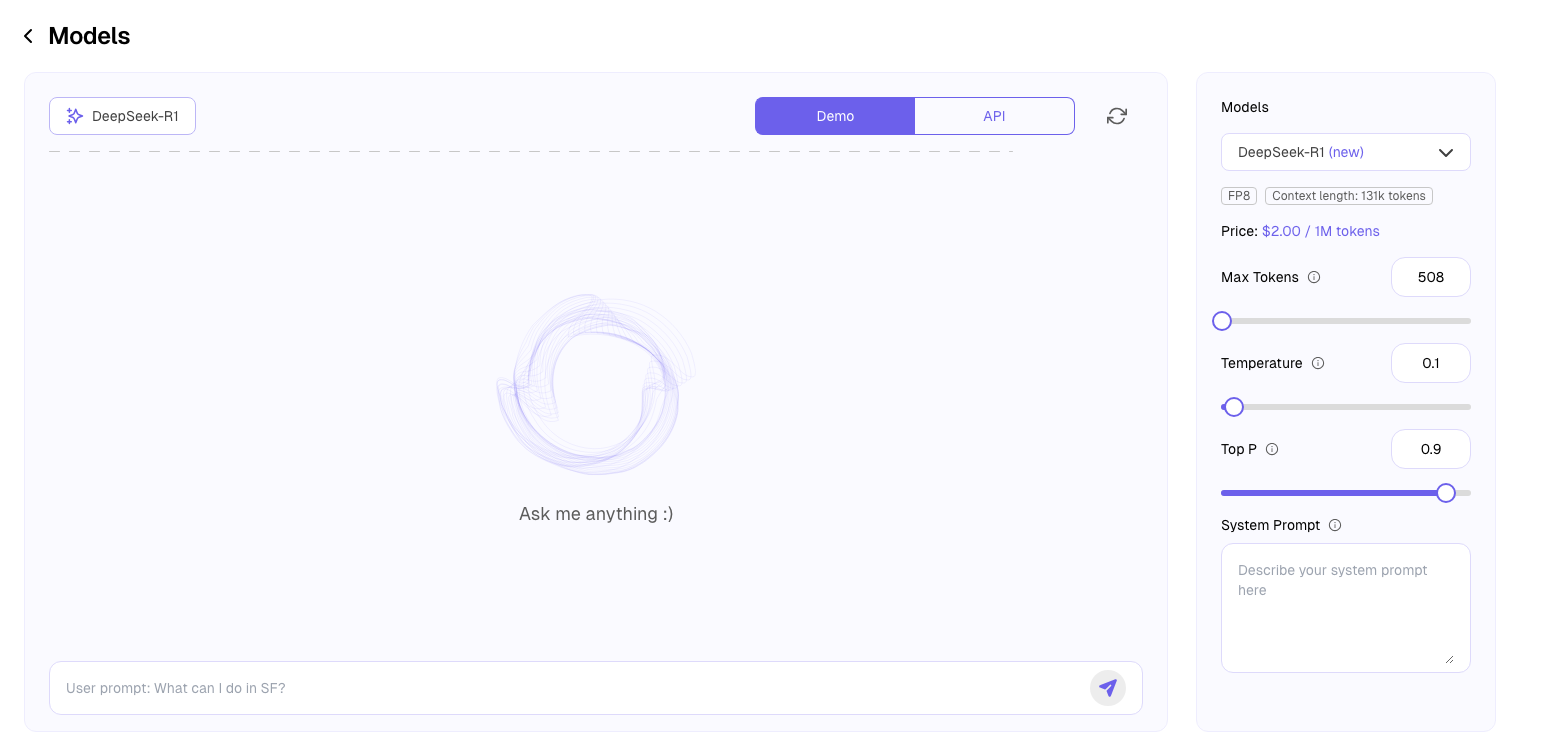
The “Rent GPU” tab allows users to pay for and rent available GPUs from the Hyperbolic network. Depending on the type and quantity of GPUs, hourly rental prices range from $0.3 to $2.3. Just like the Models tab, users can top up credits to rent and use the GPUs.

Credits can be purchased through the “Billing” tab. Both fiat payments via Stripe and crypto payments using stablecoins on the Base network are supported.
According to Hashed’s Dune dashboard, the number of on-chain payment accounts on Hyperbolic increased from 171 on March 3 to 1,450 on March 31 — an 8.5x growth. The total crypto payments reached nearly $14,600, reflecting growing interest from Web3 users.

4. Prime Intellect
Prime Intellect is a project launched to address the issues of centralized computing resources and high infrastructure costs. Its vision is to build a peer-to-peer (P2P) network that connects globally distributed GPUs, enabling anyone to participate in AI model development and share the resulting value within a collaborative ecosystem.
4.1. Key Products and Achievements
The core service of Prime Intellect is its decentralized GPU marketplace, “Prime Intellect Compute.” This platform aggregates idle GPU resources from individuals, cloud providers, and data centers around the world, offering scalable and affordable computing power for AI research and model development. As of July 2024, the platform has integrated with over 12 cloud providers to supply high-performance GPUs at competitive prices.
In October 2024, Prime Intellect became the first in the world to successfully train a distributed LLM with 10 billion parameters. The model, named INTELLECT-1, was trained over 42 days across 30 independent nodes spanning three continents. This milestone demonstrated that large-scale AI training is achievable in a decentralized environment, achieving an impressive 98% computational efficiency — all without relying on centralized servers.
In addition, Prime Intellect continues to expand its ecosystem through collaborations with various partners across the industry. Notable examples include open-source AI companies and infrastructure projects such as Hugging Face, Arcee AI, and Akash Network, which contribute computing resources across both Web2 and Web3 landscapes.
4.2. Fundraising
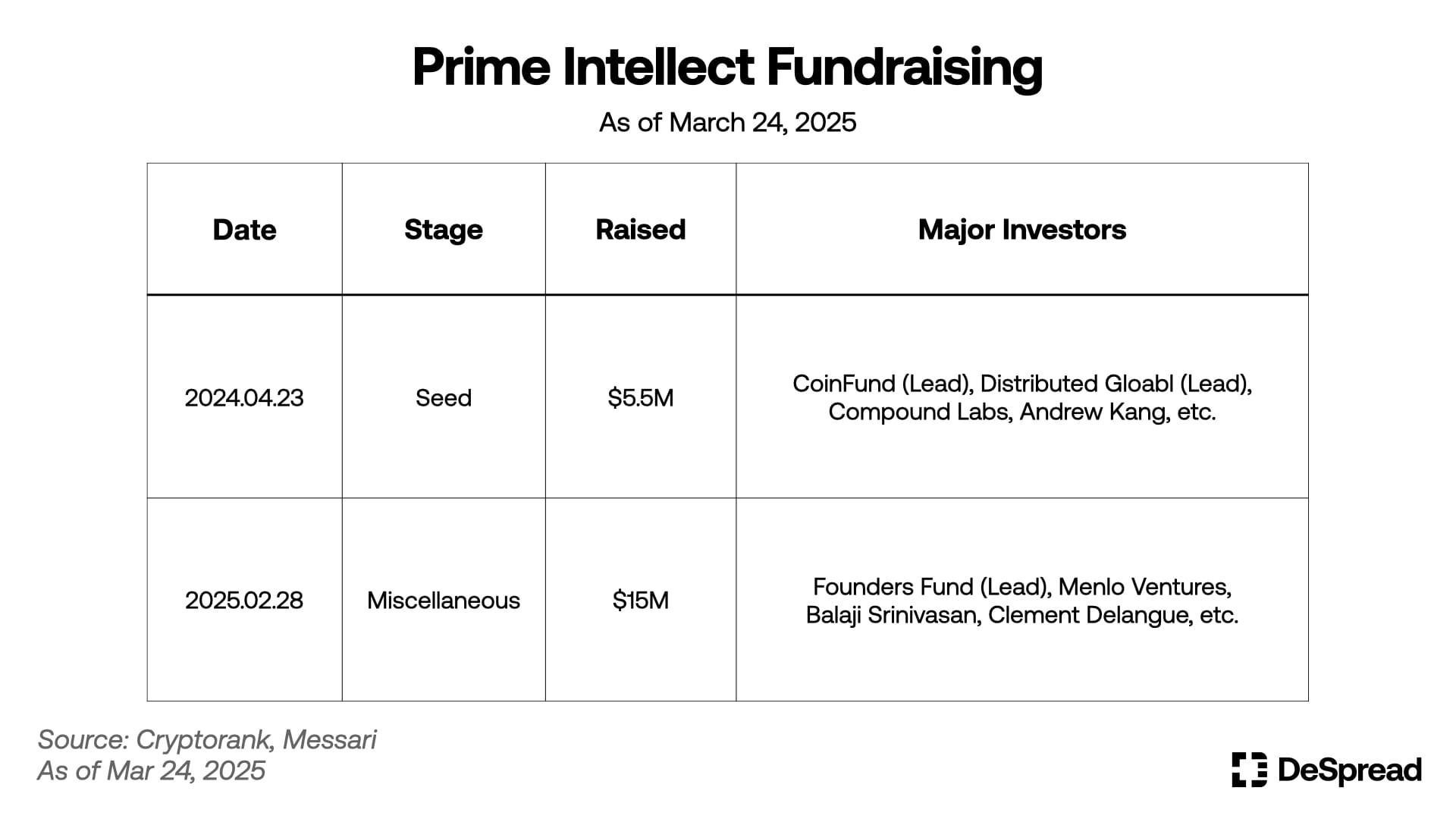
To date, Prime Intellect has raised a total of $20.5M across two funding rounds. The seed round, held on April 23, 2024, raised $5.5M led by CoinFund, with participation from well-known KOL and angel investor Andrew Kang. Subsequently, on February 8, 2025, the project secured an additional $15M in a follow-on round led by Founders Fund.
Notably, the latest round attracted angel investments from leading figures in the AI and machine learning industry, including Clement Delangue (Founder of Hugging Face), Emad (Founder of Stability AI, known for Stable Diffusion), and Andrej Karpathy (Founding member of OpenAI and former Director of AI at Tesla). These endorsements highlight Prime Intellect’s potential recognition not just within Web3, but across the broader Web2 AI ecosystem as well.
4.3. Team Background
Vincent Weisser, Co-founder & CEO
- Professional experience spanning AI, biotech, and semiconductors
- Former Co-Initiator of VitaDAO and Bio.xyz
- Twitter / LinkedIn
Johannes Hagemann, Co-founder & CTO
4.4. TGE Preparation Strategy
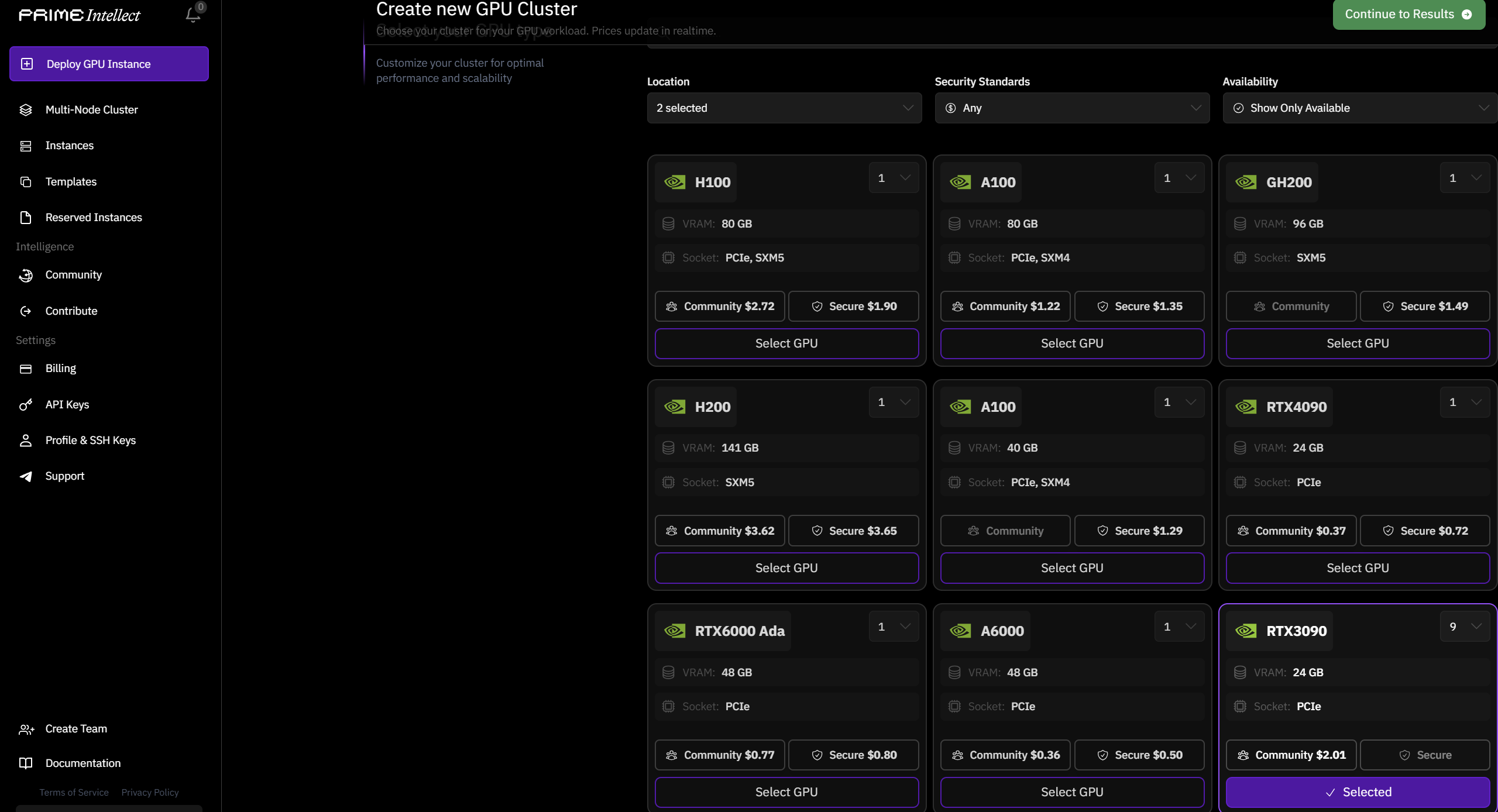
Currently, the only way for general users to contribute to Prime Intellect is by renting and using GPUs from the marketplace. However, it’s important to note that in the case of a similar decentralized GPU network protocol — Io.net — no specific rewards were distributed to GPU users at the time of its TGE. Therefore, even if users actively utilize GPUs on Prime Intellect, there is no guarantee of receiving rewards, and expectations should be managed accordingly.
5. Kuzco
Kuzco is a project launched to efficiently utilize idle GPU resources distributed across the globe. Its goal is to build a decentralized GPU network that aggregates unused computing power and channels it into AI inference workloads. Ultimately, Kuzco envisions dramatically lowering the cost of AI model inference, thereby accelerating the democratization of AI technology and enabling tangible real-world impact.
5.1. Key Products and Achievements
Kuzco operates a platform that connects global GPU providers with data consumers seeking to build and run AI models. It supports the cost-efficient execution of LLMs such as Llama2 and Mistral. Data consumers can access these models via OpenAI-compatible APIs provided by Kuzco, while GPU providers earn $KZO points as rewards for contributing computing power.
Kuzco has demonstrated rapid growth since its early testing phase. During its public beta in 2024, over 1,400 GPUs were active on the network. By 2025, that number had more than quadrupled to over 6,000 GPUs, collectively providing 98TB of VRAM capacity. Thanks to its proprietary scheduling technology, Kuzco claims to achieve over 90% utilization efficiency per GPU, which in turn allows it to offer AI inference at up to 90% lower costs compared to traditional alternatives.
In January, Kuzco gained significant attention from the broader ecosystem when it hosted an AMA with the Solana Foundation, highlighting how its GPU network infrastructure is built on Solana.
5.2. Fundraising
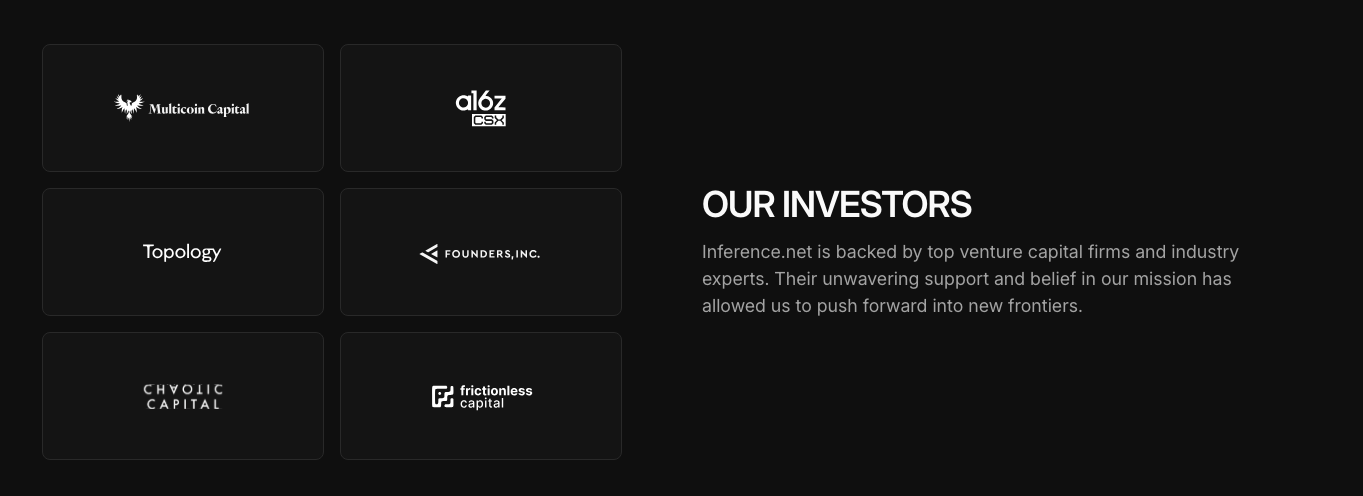
On September 9, 2024, Kuzco raised $500K through a16z’s Crypto Startup Accelerator program, a16z CSX. According to Kuzco’s website, it has also secured additional investment—though the specific timing and amounts remain undisclosed—from firms including Multicoin Capital and Topology Ventures.
5.3. Team Background
Sam Heutmaker, Co-founder & CEO
- Former CTO of digital ticketing platform Sellout
- Former CTO of commercial real estate platform Biproxi
- Participated in designing Solana Pay V2 via a grant from the Solana Foundation
- Twitter / LinkedIn
Ibrahim Ahmed, Co-founder & CTO
- Bachelor’s in Computer Science from Michigan State University
- Former engineer and studio founder at crypto community and startup studio Founders, Inc
- Twitter / LinkedIn
54. TGE Preparation Strategy
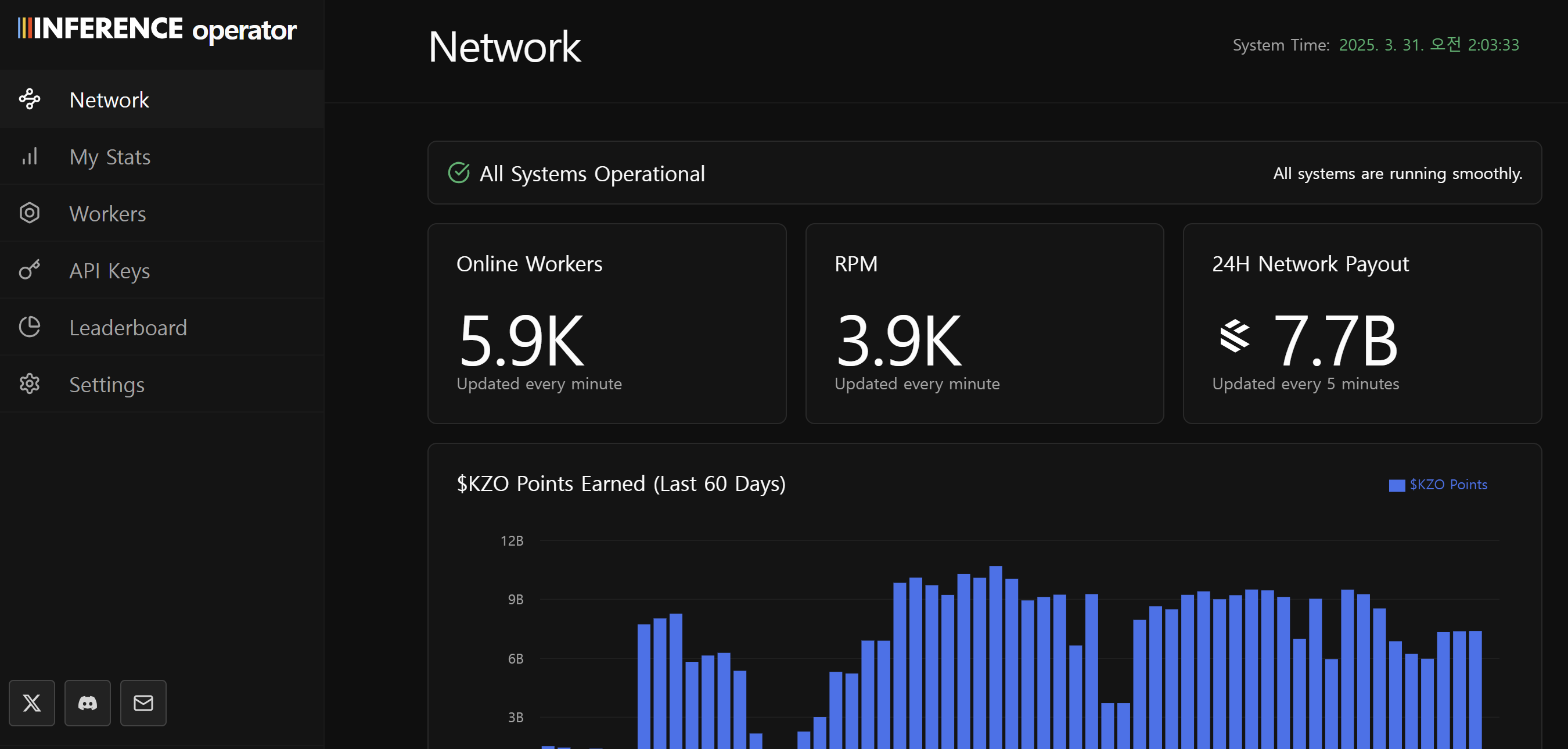
In preparation for its TGE, scheduled after June 2025, Kuzco is currently operating an incentivized testnet prior to its mainnet launch. The network rewards early contributors with $KZO points, encouraging participation. Users can contribute by supplying their own GPUs or renting GPUs via platforms such as VAST.AI, then connecting them to inference.supply to start earning points.
6. Chainbase
With dozens of blockchains now active in the industry, on-chain data is becoming increasingly fragmented. As a result, significant resources are being wasted on dataset development and structuring. Chainbase is an omnichain data network designed to address this issue by aggregating scattered on-chain data across multiple networks to build a data layer optimized for the AI era.
6.1. Key Products and Achievements
Chainbase serves as an omnichain data network that consolidates on-chain data from various networks, offering core data infrastructure to the Web3 ecosystem. Its primary services include:
Data Streaming Framework – Manuscript
Manuscript provides an environment for real-time processing and analysis by freely integrating on-chain and off-chain data. Its biggest strength lies in accessibility: Manuscript supports multiple programming languages, interfaces, and data formats, enabling developers to easily work with complex multichain data.
Omnichain Data Network – Chainbase Network

The Chainbase Network consists of four roles: Developers, Operators, Validators, and Delegators:
- Developers: Handle the supply and demand of data, process data using Manuscript, and receive rewards.
- Operators: Provide computing resources at the execution layer and receive rewards for processing data tasks.
- Validators: Use a consensus protocol improved from CometBFT. Voting weight is determined by the amount of $C tokens staked under a Delegated Proof-of-Stake (DPoS) mechanism.
- Delegators: Contribute to the network’s economic security by delegating $ETH or $C to Validators.
Active Industry Partnerships
Chainbase is rapidly expanding its presence as a decentralized data infrastructure hub through partnerships with various Web3 projects and organizations, including EigenLayer, Carv, and Gaia. Notably, in March, it announced a collaboration with Walrus, the data storage protocol from Mysten Labs, to build a pipeline capable of storing 300TB of data generated across more than 220 networks—garnering significant attention from the market.
6.2. Fundraising
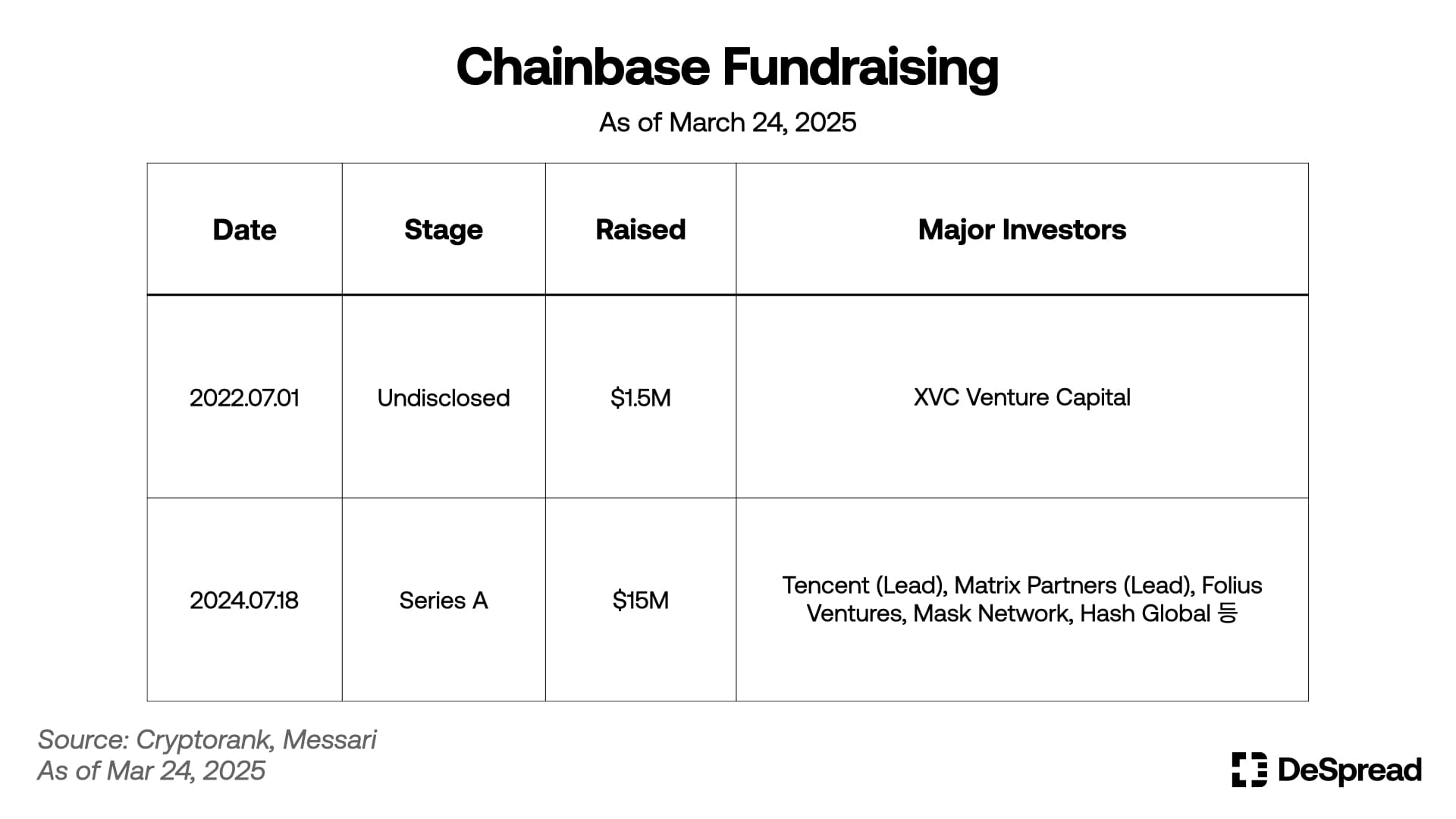
Chainbase has raised a total of $16.5M across two funding rounds. On July 1, 2022, it secured $1.5M in an undisclosed round led by XVC Venture Capital. Later, on July 18, 2024, it raised $15M in a round co-led by Tencent and Matrix Partners.
6.3. Team Background
Chris Feng, Co-founder & COO
Chris Feng, co-founder and COO of Chainbase, has a background in financial services, including management consulting, cross-border M&A, and venture capital. At Chainbase, he oversees all non-technical areas, including community building, marketing, and ecosystem growth.
6.4. TGE Preparation Strategy
Chainbase’s native token, $C, serves multiple purposes: covering data processing fees, staking, and incentivizing participants. It plays a crucial role in ensuring the economic security and sustainability of the Chainbase Network.
On August 16, 2024, Chainbase launched a mission-based airdrop event as part of its Genesis Campaign. Participants could earn points or NFTs that may be redeemable for future token rewards by performing tasks such as connecting a wallet to the testnet or interacting with a chatbot.
However, the Genesis Campaign has since concluded. Currently, the only way for general users to contribute to Chainbase is by registering for the whitelist and running an AVS testnet operator node.
7. Conclusion
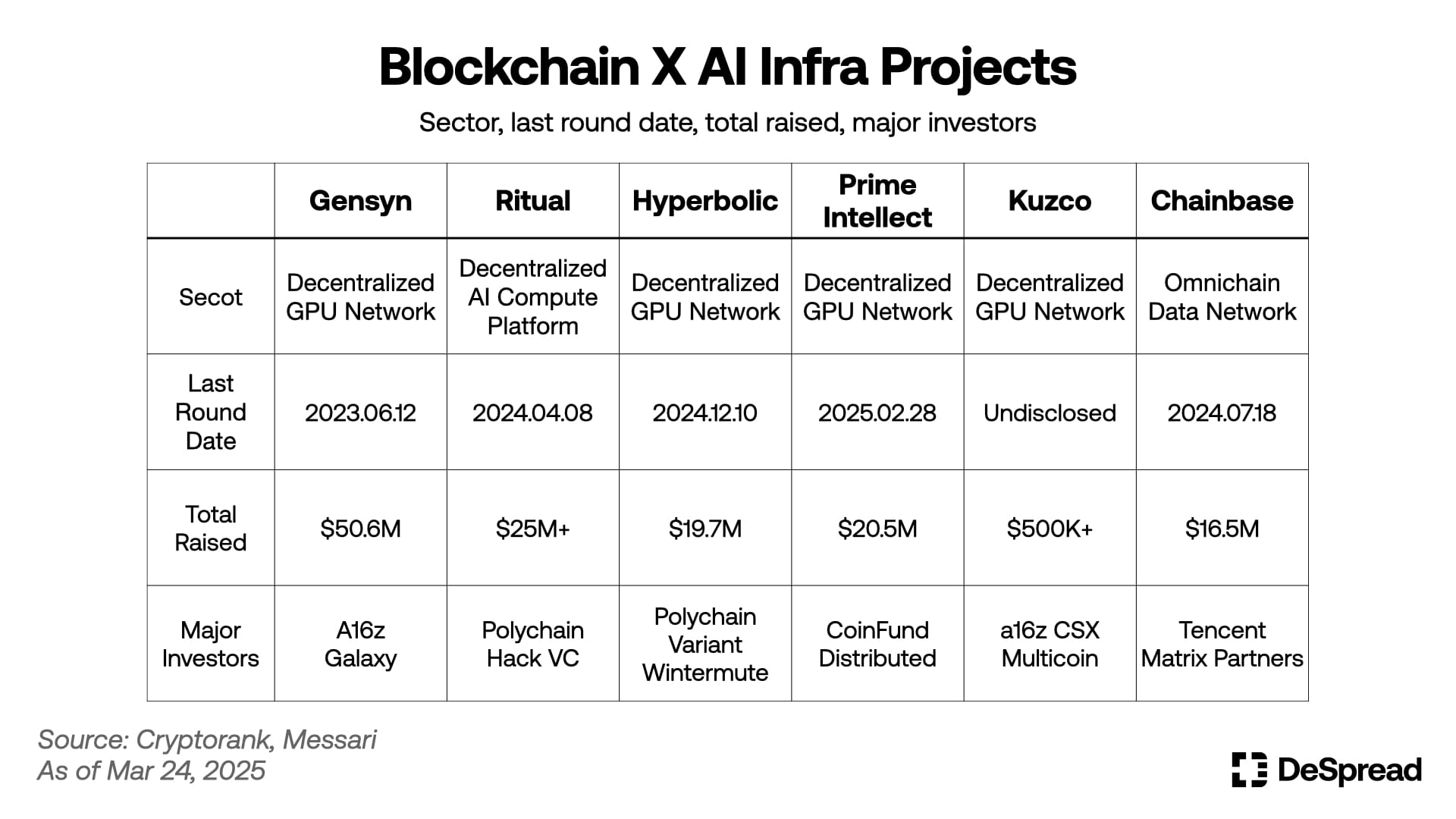
We’ve seen numerous market narratives rise and fall—DeFi, NFTs, the metaverse, and more. Many projects that once drew significant attention have gradually faded, offering a point of reflection as we evaluate today’s AI-driven momentum.
With global interest in AI growing rapidly and new AI-based projects emerging daily, distinguishing those with real utility and long-term sustainability has become more critical than ever.
This article reviewed six blockchain-AI convergence projects currently drawing attention and proposed actionable strategies to prepare for their upcoming TGEs from the perspective of both users and investors.
Of course, many more new projects will likely appear moving forward. In such times, rather than chasing short-term trends, it’s wise to consider which projects can continue to offer meaningful use cases and expand their role within the ecosystem even after TGE. That mindset will lead to more stable, long-term investments.